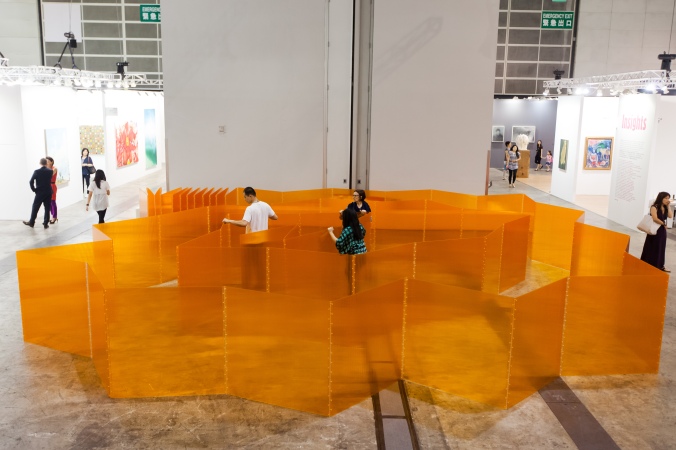The following is a transcript of a conversation between IFA PhD candidates Susanna Temkin and Katharine Wright and Master’s student, Caroline Barnett. Temkin and Wright are the co-curators of the Great Hall Exhibition program for the 2014-2015 academic year. The interview took place on October 27, 2014.

CB: So, tell us a little bit about the show. What can we expect to see?
ST: We’re going to be installing a total of eight works by the artist Marta Chilindron, three of which are large-scale. Chilindron creates manipulable sculptural works using transparent and multi-colored plastic-based material. For the show, we are installing works throughout the Great Hall. We wanted to make as much use of the space as possible, so they will be in the vestibule, the lobby space, and on the marble table on the platform right below the staircase. But, right now things are tentative. We’re giving this interview before we do the installation, so we will have to see how everything plays out.
CB: It’s appropriate that the installation is in flux – expanding and collapsing like the title.
ST and KW: Yes!
CB: What were the challenges of curating a show in the Duke House? I imagine it has a lot of limitations.
KW: One of the challenges is the nature of the space…there are a lot of things you have to work around. It’s a place of major circulation; everyone who comes in and out of the building has to go through there at some point – there are classrooms, offices, our lunch room. So that really hinders where you can exhibit things.
ST: This is not a traditional exhibition space. It’s challenging: we had no walls, we had to really respect the building, people have to be able to use it, it’s not climate controlled, etc., etc.
KW: But that’s why Chilindron’s work is so exciting because it dictates that kind of movement and manipulation of space; it can fill it or contract as need be. For example, right now we are involved in discussions about the work, Green Pyramid (2006). Depending on how we choose to install the piece, it can stretch from a hexagonal shape with a diameter of eight feet to a much more condensed, triangular form that uses about half of the floor space.
CB: You can’t change the lighting, can you?
ST: Yes! The building staff will help with spotlights. However, one thing that is important about Chilindron’s art is how the nature of the materials she works with – transparent acrylics and other plastics-based media – interacts with the light effects of the space. I’m really excited to see how the works we install near the staircase will reflect light filtering in from the Duke House’s skylight. For students, I think it will be nice to see how the works change throughout the course of the day or with the weather, for example.
CB: Are you two continuing the program into the spring?
KW: We’ve been tasked with organizing the spring exhibition. I should explain that we’re co-organizers and co-curators of this year’s Great Hall Exhibitions, but Susanna has taken the lead on this show in the fall, and I’m going to take the lead in the spring. We’re still in the process of negotiating what the next exhibition will entail.
